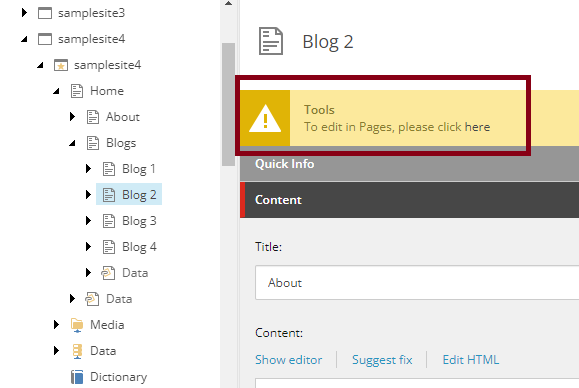- Set Scheduled Publish Requestor as Publisher
A content author schedules a publish request. When the scheduler job executes the request at the appropriate time, it publishes the content as the requestor user. This allows Ops teams to track who initiated the request. If you want to track what items are published, you can override the publish:itemProcessed event to log the details..
With this change, the actual publish request will be executed in the requestor user context.
- Alert content authors if the item is not in final workflow state
The final workflow state is an important part of Sitecore's workflow system. It helps ensure that content items are published in a controlled manner and are not accidentally changed after they are published.
If an item scheduled for publishing is not in the final workflow state, the publish job will not publish the item or will publish the last approved item version. To remind the content authors, a warning has been added to the dialog that shows whether the item is in the final state. If the item does not have a workflow, this section is hidden.
- Set the current time + 2 minutes as default for publish time
Choosing the date and time when scheduling a publish was an extra step for content authors. With this change, the current date and time plus 2 minutes will be set as the default publish time in the publish time field.
A content author schedules a publish request. When the scheduler job executes the request at the appropriate time, it publishes the content as the requestor user. This allows Ops teams to track who initiated the request. If you want to track what items are published, you can override the publish:itemProcessed event to log the details..
With this change, the actual publish request will be executed in the requestor user context.
The final workflow state is an important part of Sitecore's workflow system. It helps ensure that content items are published in a controlled manner and are not accidentally changed after they are published.
If an item scheduled for publishing is not in the final workflow state, the publish job will not publish the item or will publish the last approved item version. To remind the content authors, a warning has been added to the dialog that shows whether the item is in the final state. If the item does not have a workflow, this section is hidden.
Choosing the date and time when scheduling a publish was an extra step for content authors. With this change, the current date and time plus 2 minutes will be set as the default publish time in the publish time field.
- Updated to latest Sitecore CLI and Serialization plugin
Updated to use the latest version of Sitecore CLI (5.2.113 as of 11/07) with Serialization plugin.
The Sitecore packages (.zip) are yet to be updated in the repository. Please take the latest codebase for the enhancements.
Updated to use the latest version of Sitecore CLI (5.2.113 as of 11/07) with Serialization plugin.














































